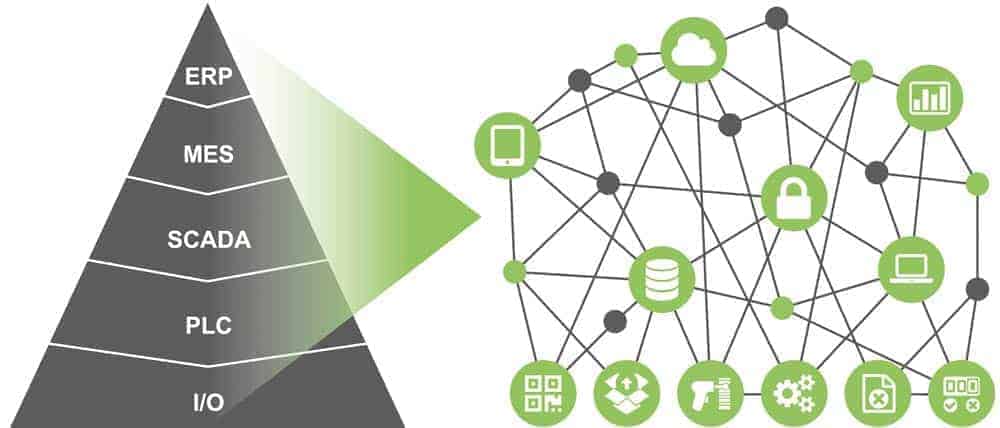Is SAP ready for Industry 4.0?
![[shutterstock.com:568086373, Artit Fongfung]](https://e3magpmp.greatsolution.dev/wp-content/uploads/2017/07/shutterstock_568086373.jpg)

 When it comes to supporting business processes in the commercial world, SAP has been setting standards for decades. For a long time, however, the company was not really able to do anything with the world of production; there were hardly any specific applications.
When it comes to supporting business processes in the commercial world, SAP has been setting standards for decades. For a long time, however, the company was not really able to do anything with the world of production; there were hardly any specific applications.
SAP has been changing this for almost ten years. With SAP Manufacturing Execution (SAP ME), for example, the Walldorf-based company has a fully-fledged ME system in its portfolio that handles typical production IT tasks - such as machine and store floor data collection.
And the SAP Manufacturing Integration and Intelligence (SAP MII) platform ensures data exchange between the store floor and the system landscape. With this offering, SAP has become a serious competitor for the established specialized MES providers.
Today, many SAP users think twice about whether a best-of-breed approach really makes more sense than staying with the SAP standard. The fact that SAP has become more intensively involved with production in recent years seems to be a necessary and favorable development for the Group in view of the debate about Industry 4.0 - or Industrial Internet.
Because in the future, companies will devote a large part of their concentration and budget to digitizing industrial processes. After all, this is where immense potential lies. However, the current offerings from SAP - just like the systems from the established MES providers - are not suitable for the step into the new industrial age.
The reason: These production IT solutions are relics of an era when centralization was the paradigm. They lie as monolithic blocks on their own servers. And they have their firmly assigned place in the automation pyramid between ERP at the top and SCADA, PLC and machines at the bottom. This rigid principle sets narrow limits, lacking the necessary flexibility.
For example, it is often problematic to really collect all the data, consolidate it and make it available throughout the company - but this is extremely important for traceability or the analysis of key production figures, for example. In addition, new functions can only be added and rolled out with difficulty, and the integration of new machines, systems or even plants involves a great deal of effort and therefore high costs.

Complete networking
All this does not fit into a time in which decentralization is the new paradigm. At a time when the automation pyramid is to become an automation network in which the various MES functions - or better: all production-related functions - are handled at different network points.
The aim is to create end-to-end services for companies that map complete processes and can be quickly set up, expanded or adapted as required - traceability is another good example here.
This is to be achieved through complete networking: from the machines and systems to the cloud. Because if everything can communicate with everything else, rigid, hierarchical structures are superfluous. On the one hand, such comprehensive networking requires a high degree of openness - also and above all with regard to the software.
Without this openness, the exchange of data quickly ends at the system's own boundaries. On the other hand, agile software modules are required. And agility in this context means, for example, that the software must be able to be installed easily and without great effort on existing infrastructure components in order to turn them into networkable smart devices. Accordingly, small, modular, adaptable units are more in demand. Large, high-performance applications have difficulties here.
What applies to the software itself also applies to the associated business models of the providers. Genuine pay-per-use models that can be scaled in all directions are a much better fit for the networked age than license agreements with a long term that also include functions that are not yet needed. The rethink has only just begun at SAP and other established providers.
So is SAP in danger of going under with the fourth revolution? Certainly not. Because even in a networked infrastructure, large systems have their place and their justification. This is all the more true because Industry 4.0 does not stop on the factory floor, but also includes upstream and downstream commercial processes - and SAP continues to do an outstanding job here.
However, it is questionable whether the Walldorf-based company will be able to maintain its dominant position. Either they meet the requirements of the networked world and focus on openness and agility. Looking to the future, this is certainly the right way to go.
But it also makes it easier for users to decide against SAP here and there. Or the Walldorf-based company will stick to its current course. In this case, a plausible scenario is that SAP's playing field will gradually shrink.
Smart Industry Apps
With the Smart Industry Apps, Nemetris has developed an approach that is oriented to the new requirements. The Python-based and platform-independent applications can be installed in the existing distributed infrastructure on almost all components - from machines and systems to SAP systems and the cloud. On the one hand, the individual apps perform typical MES and production IT tasks. They collect, process and visualize data. On the other hand, they network previously isolated infrastructure components by turning simple hardware into bidirectional smart devices capable of communication. Nemetris also provides its customers and partners with an open framework. The apps can thus be individually adapted and expanded, and new applications can be developed on this basis.






